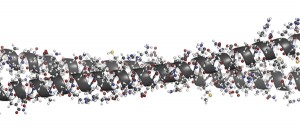10 signs SIBO & difference between IBS and SIBO. The FODMAP diet and why it’s not for everybody. Most digestive problems like IBS are formed by lifestyle; our nutrition & our daily stress. Digestive complaints — constipation, diarrhoea, heartburn and bloating are very common.
The IBS diet
Most digestive problems like IBS and SIBO are formed by lifestyle; our nutrition and our daily stress. Digestive complaints — constipation, diarrhoea, heartburn and bloating are very common. SIBO can leave us feeling tired all the time. SIBO or IBS? (read on)…
We shouldn’t have to live with them though.
SIBO or IBS?
SIBO is Small Intestinal Bacterial Overgrowth. It’s often confused with IBS (Irritable Bowl Syndrome).
Dysbiosis is a microbial imbalance on or inside the body. 10 Signs of SIBO — read on…
FODMAP, GAPS paleolithic diet, pegan diet, sirtfoods, sugar free. What’s our take on these?
London Nutrition expert Susannah at The Bulgari Hotel, Knightsbridge and The Chelsea Private Clinic uses a functional approach. This can help identify between SIBO and IBS.
Digestive issues affect gut health. London naturopath and osteopath Susannah looks at total body wellness. Her gut health assessment links dysfunction to skin issues, stubborn belly fat, tiredness, low immunity, musculoskeletal pain, etc…
— How can you actually use this? —

SIBO test
10 signs of SIBO
1. Gas 2. Bloating 3. Diarrhoea 4. Abdominal pain or abdominal cramping 5. Constipation (much less common than diarrhoea) 6. Diagnosis of IBS or IBD irritable bowel syndrome or inflammatory bowel disease
7. Food intolerances such as
gluten
casein
lactose
fructose and more
Can we get rid of food intolerance for good? Drop us a line. How can we help answer your food intolerance questions?
8. Chronic illnesses such as: fibromyalgia : chronic fatigue syndrome : diabetes : neuromuscular disorders
autoimmune disorders
9. Nutrient deficiencies and their associated symptoms: Vitamin B12, A, D, E, iron, other B vitamins, fat, protein and carbohydrate malabsorption.
Carbohydrate intolerance-symptoms se.g. bloating or pain or gas or fatigue after eating.
Fat malabsorption.
10. Joint pain
SIBO test
SIBO Breath Test This is the gold standard. However, it’s quite cumbersome. Individuals must fast for 12 hours, breathe into a small balloon, ingest a precise amount of sugar and repeat breath samples every 15 minutes for 3 or more hours. Abnormal breath tests also can signify pancreatic insufficiency and celiac disease.
Organix Dysbiosis Test or Urine Organic Acid Test This functional medicine lab test the urine for by-products of yeast or bacteria in the small intestine. If your small intestine is housing a yeast or bacterial overgrowth, byproducts will appear in your urine, indicating their presence. This test is much easier for patients and only requires one single urine specimen. This is the test I use most often in my clinic.
Comprehensive Stool Test This is also a functional medicine lab test looking at the flora of the large intestines.
History By listening to our patient’s history and symptoms oftentimes, this can reveal far more than any test. The question is, can we make a diagnosis of SIBO in order to effectively treat it?
SIBO diet
The goals of treatment for SIBO and IBS are In The Four Phases.
PHASE 1) correct underlying cause PHASE 2) provide the 2 PHASE plan: nutrition support to target the cause 3) Nutritional support to treat side-effects of malabsorption 4) treat bacterial overgrowth
The standard treatment for SIBO is an antibiotic called Xifaxan or Rifaximin. You may be prescribed this by a prescribing physician as part of our clinic team. Because Xifaxan isn’t well absorbed throughout the body, it mostly stays in the gut. So, it’s effective against SIBO. The antibiotic – probiotic combination is carefully considered @ Susannah Makram Clinics. The right amount of probiotic is incorporated into your FOUR PHASE treatment.
Nutrient supplementation is only effective to target your primary health concern when administered in this supervised manner.
Sibo Treatment
So now you know the 10 signs of SIBO. Generally, it’s advised to adopt a long-term diet low in carbohydrates. Specifically, refined carbohydrates. HOWEVER, Candida overgrowth is more common in those susceptible to SIBO. So we may set ourselves up for more issues with low carbohydrate diets thus.
EAT DRINK TAKE MAKE for SIBO and IBS. What it is. Personalised nutrition in the 4) phases. What it’s not: a generic FODMAP Diet or the GAPS Diet – in fact it’s not a diet at all! Functional Nutrition with Susannah is designed to be effective by its practical nature that fits into your lifestyle as well as the specially designed methodical approach it takes to heal your gut.





